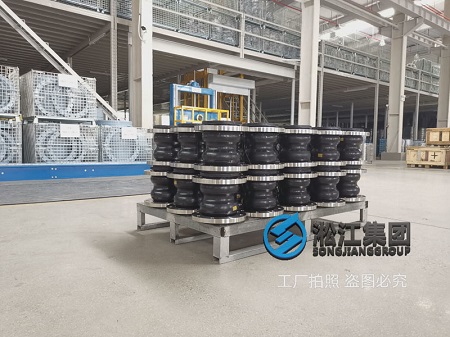
The official website of Shanghai Songjiang Vibration Absorber Group Co., Ltd. introduces information about the basic requirements for qualified cast ingots and crystallizers. Songjiang Group provides high-quality rubber expansion joints and high-frequency vibration rubber expansion joints for numerous steel plant ingot crystallizers, rated for PN20 pressure.
- Good thermal conductivity is essential for rapid solidification of molten steel.
- Excellent wear resistance is necessary to prolong the lifespan of the crystallizer, reduce maintenance workload, shorten replacement time, and enhance the operational efficiency of continuous casting machines.
- Sufficient stiffness is required, especially to minimize deformation under extreme temperature differentials and thermal shocks.
- The structure should be simple and compact, facilitating easy manufacturing, assembly, disassembly, and adjustment. The cooling water channels should be easily connected for quick replacement. Additionally, the crystallizer should have low self-weight to reduce inertia forces during vibration and minimize the power required for vibration devices, ensuring smooth operation.
Crystallizer: Vital Component of Continuous Casting Machines
The crystallizer is a crucial component of continuous casting machines, functioning as a water-cooled steel ingot mold without a bottom, often referred to as the ‘heart’ of continuous casting equipment.
Definition of Crystallizer: A trough-shaped container with a jacketed wall or internal coils for heating or cooling the solution inside the trough. The crystallization tank can be used as an evaporative or cooling crystallizer. Stirrers may be added inside the tank to improve crystal production intensity. Crystallization tanks can be operated continuously or intermittently. Intermittent operation produces larger crystals but may result in crystal clustering and carry-over of mother liquor, affecting product purity. This type of crystallizer has a simple structure and lower production intensity, suitable for the production of small batches of products such as chemical and biochemical reagents.
At this stage, the inner wall of the crystallizer is subjected to the combined action of static pressure from high-temperature molten steel and mechanical and thermal stresses generated by relative motion with the ingot shell, operating under extremely harsh conditions.

Related links:Perfect Substitute for Marley WILLBRANDT Rubber Expansion Joints










